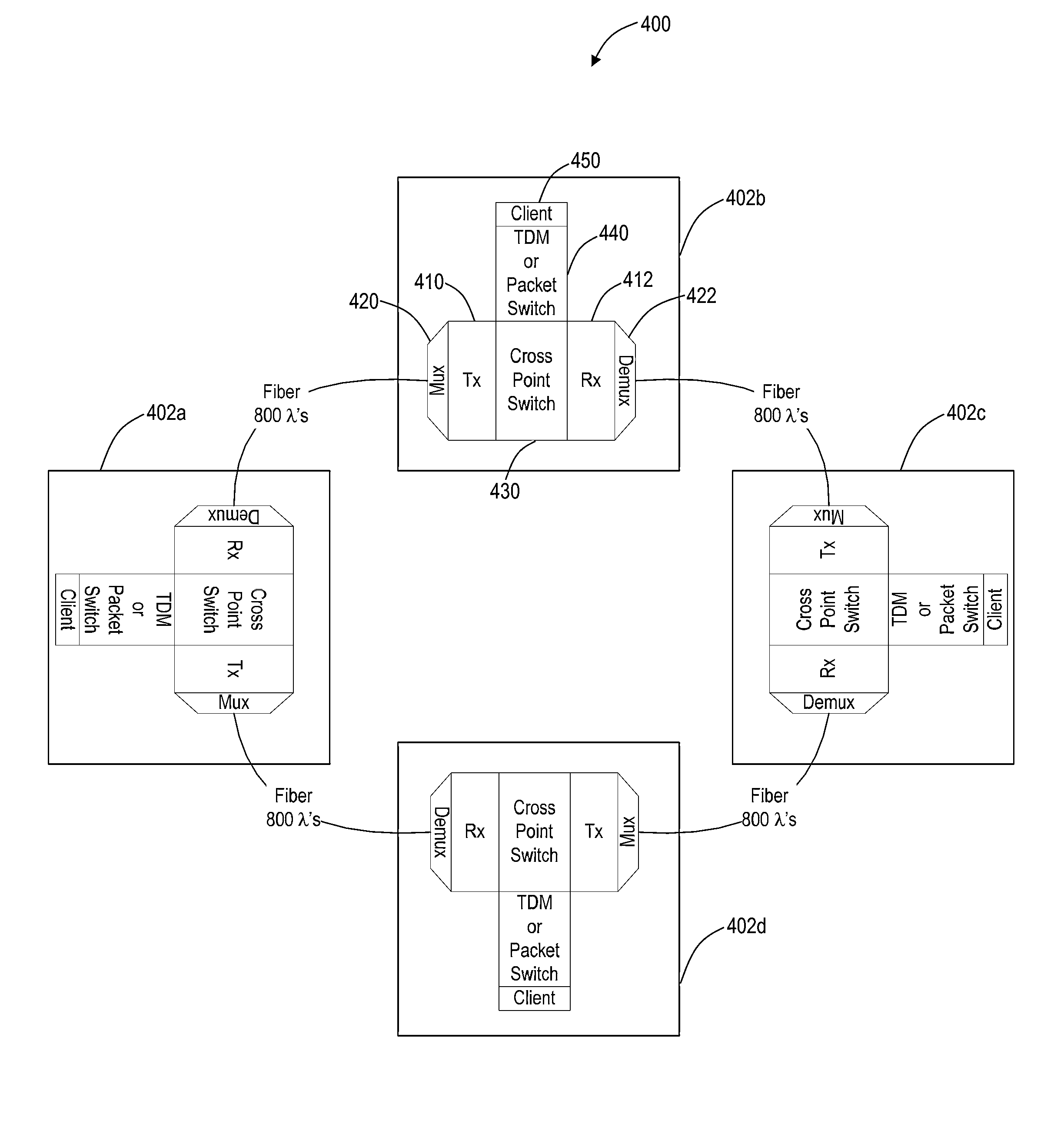High capacity fiber-optic integrated transmission and switching systems
a high-capacity, transmission and switching technology, applied in the field of fiber optic systems and methods, can solve the problems of increasing the overall network cost and complexity, difficult to ignore the benefits of the technology, and expensive and power-hungry transmitter and receiver hardwar
- Summary
- Abstract
- Description
- Claims
- Application Information
AI Technical Summary
Benefits of technology
Problems solved by technology
Method used
Image
Examples
Embodiment Construction
[0033]In various exemplary embodiments, novel high capacity fiber-optic integrated transmission and switching systems are described. In an exemplary embodiment, a baseline target capacity is 32 Tbps, and may be achieved with a variety of approaches as described herein. The objective is an overall system design that is low cost in high volumes, with low power consumption, and is easy to deploy and maintain. The approach uses the full “transparency” window of modern optical fibers from about 1270 nm to about 1670 nm, and populating this window with a large number of relatively low-rate wavelengths. The target span length coverage is approximately 80 km of standard non-dispersion shifted fiber (NDSF) and non-zero-dispersion shifted fiber (NZDSF), which sets a boundary condition for Loss and Chromatic Dispersion. Since optical channels are electrically terminated at every node, an electrical switching fabric is provided for both Add / Drop channel access, and for express traffic through t...
PUM
 Login to View More
Login to View More Abstract
Description
Claims
Application Information
 Login to View More
Login to View More - R&D
- Intellectual Property
- Life Sciences
- Materials
- Tech Scout
- Unparalleled Data Quality
- Higher Quality Content
- 60% Fewer Hallucinations
Browse by: Latest US Patents, China's latest patents, Technical Efficacy Thesaurus, Application Domain, Technology Topic, Popular Technical Reports.
© 2025 PatSnap. All rights reserved.Legal|Privacy policy|Modern Slavery Act Transparency Statement|Sitemap|About US| Contact US: help@patsnap.com



